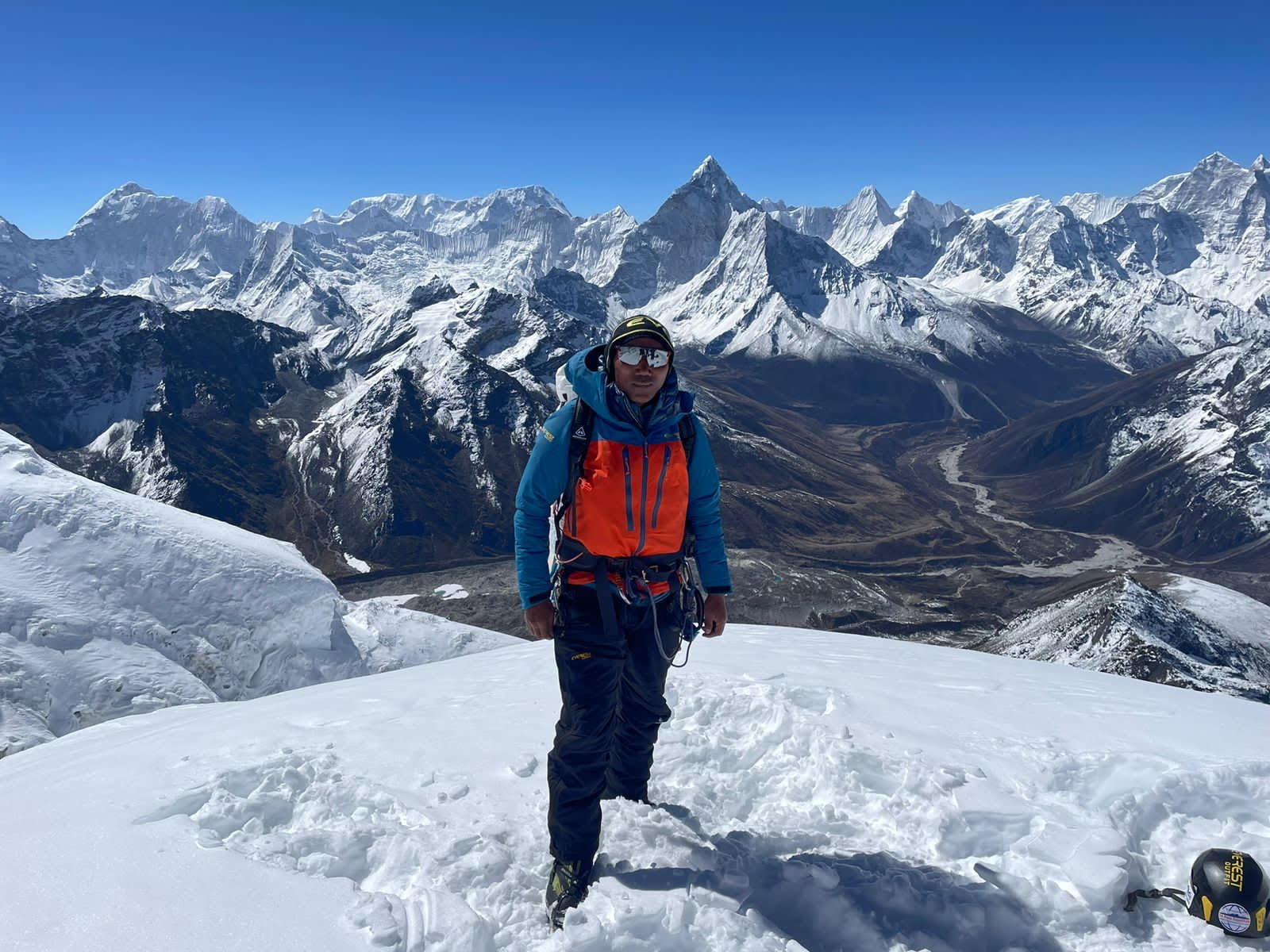Trip Highlights:
-
Summit Mera Peak (6,476m), the highest trekking peak in Nepal, with unmatched Himalayan views.
-
Enjoy a remote expedition through the pristine Hinku Valley, far from crowded trails.
-
Witness a stunning 360° panorama of five 8000-meter giants: Everest, Lhotse, Makalu, Cho Oyu, and Kangchenjunga.
-
Climb under the leadership of Kami Rita Sherpa, the world’s most experienced high-altitude mountaineer.
-
Learn glacier travel, fixed rope use, and alpine safety in a real Himalayan setting.
-
Small-group expedition with expert logistics, base camp support, and acclimatization planning.
-
Immerse yourself in Sherpa culture, forests, valleys, and traditional villages along the way.
Trip Facts:
-
Location: Hinku Valley, Solu-Khumbu, Nepal
-
Highest Point: Mera Peak Summit (6,476m)
-
Duration: 16 days
-
Group Size: 1–10 individuals per group
-
Trip Grade: Moderate to Alpine Climbing
-
Accommodation: Teahouses & Tented Base Camp
-
Meal Plan: Breakfast, Lunch & Dinner during trek and climb
-
Transportation: Flights to/from Lukla, Private Vehicles in Kathmandu for Pick up
-
Best Season: Spring (April–May) & Autumn (September–November)
-
Major Activity: High-Altitude Climbing & Cultural Trekking
-
Culture & Ethnicity: Sherpa communities and traditional Himalayan lifestyles
Overview of the Mera Peak Expedition
Mera Peak (6,476m) stands as the highest of Nepal’s trekking peaks and is an excellent introduction to Himalayan mountaineering. Located in the remote Hinku Valley, the expedition offers a wilder, quieter alternative to popular routes in the Khumbu. The journey begins with a flight to Lukla, followed by a dramatic and scenic trek through lush forests, ridgelines, river crossings, and culturally rich villages.
After gradually ascending through Kothe and Khare, climbers reach Mera Base Camp, where technical training and gear preparation take place. The summit climb involves glacier travel, fixed ropes on steep snow sections, and an early morning push to reach the expansive summit ridge. The reward? One of the widest mountain vistas in the world—an awe-inspiring sweep of Everest, Makalu, Lhotse, Cho Oyu, and Kangchenjunga on a clear day.
Guided by Kami Rita Sherpa and his elite support team, this expedition ensures a safe, educational, and rewarding experience, perfect for aspiring mountaineers looking to gain altitude experience in a spectacular alpine setting.
Best Season to Climb Mera Peak
The best times to climb Mera Peak are during Spring (April–May) and Autumn (September–November). These seasons provide stable weather, clear skies, and safer snow conditions on the summit route.
-
Spring: Mild daytime temperatures and colorful landscapes with blooming rhododendrons.
-
Autumn: Dry weather, crisp skies, and excellent summit-day visibility.
Winter (Dec–Feb) can be attempted but involves extreme cold, snow accumulation, and wind. Monsoon (June–Aug) is discouraged due to heavy rain, slippery trails, and potential landslides.
Training and Preparation
Though technically less demanding than some other peaks, Mera Peak still requires good fitness and preparation. The climb takes you well over 6,000 meters and includes challenging glacier sections.
-
Physical Training: Focus on cardiovascular stamina, uphill trekking with a loaded pack, and strength workouts.
-
Technical Skills: Basic use of crampons, ice axe, harness, and fixed ropes; instruction is provided during the expedition.
-
Mental Readiness: Prepare for early starts, changing weather, and the patience needed for high-altitude conditions.
-
Gear & Equipment: You’ll need proper alpine gear, including insulated climbing boots, a climbing harness, crampons, a down jacket, and glacier glasses.


